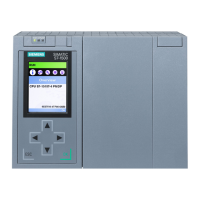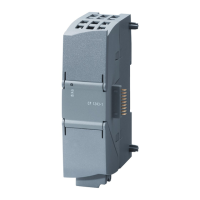CPU 1512C-1 PN (6ES7512-1CK00-0AB0)
Manual, 09/2016, A5E35306440-AB
13
New functions in firmware version V2.0
New functions of the CPU in firmware version V2.0
This section lists the new features of the CPU with firmware version V2.0.
You can find additional information in the sections of this device manual.
Table 2- 1 New functions of the CPU with firmware version 2.0 compared with firmware version V1.8
Support for pulse generators by digital on-board I/O of the compact CPU
Pulse-width modula-
tion (PWM) mode
The PWM mode is used when an output mod-
ule is to control greatest possible outputs with
low power loss (heating, size).
You use pulse width modulation, for example,
to control:
• the temperature in a heating resistor
• the force of a coil in a proportional valve
and thus the position of valve from closed
to completely open
• the speed of a motor from standstill to full
speed
With pulse width modulation, a signal with de-
fined cycle duration and variable on-load factor is
output at the digital output. The on-load factor is
the relationship of the pulse duration to the cycle
duration. In PWM mode, you can control the on-
load factor and the cycle duration.
With pulse width modulation you vary the mean
value of the output voltage. Depending on the
connected load, you can control the load current
or the power with this.
Frequency output
mode
You can implement frequencies up to 100 kHz
and thus work in ranges that cannot be
reached by a CPU with a simple digital output
with a frequency up to 100 Hz.
You can generate frequencies very precisely.
The receiver can reconstruct the information
exactly when transmission conditions are less
than ideal.
In frequency output mode, you assign a frequen-
cy value with high frequencies more precisely
than by using period duration (PWM).
Mode
Pulse Train Output
(PTO)
Pulse Train Output is a widely used interface
for drive control.
It is used in many positioning applications,
such as for retooling axes and feed axes.
PTO (Pulse Train Output) is divided into four
different types of signals. The signal "PTO (pulse
(A) and the direction (B))", for example, consists
of 2 signals. The frequency of the pulse output
represents the speed and the number of output
pulses for the route to be traversed. The direction
output defines the traversing direction. The posi-
tion is thus preset increment-precise.
The outputs are controlled with S7-1500 Motion
Control via technology objects.
PTO is a simple and universal interface between
control system and drive. As a result it is sup-
ported worldwide by many stepper and servo

